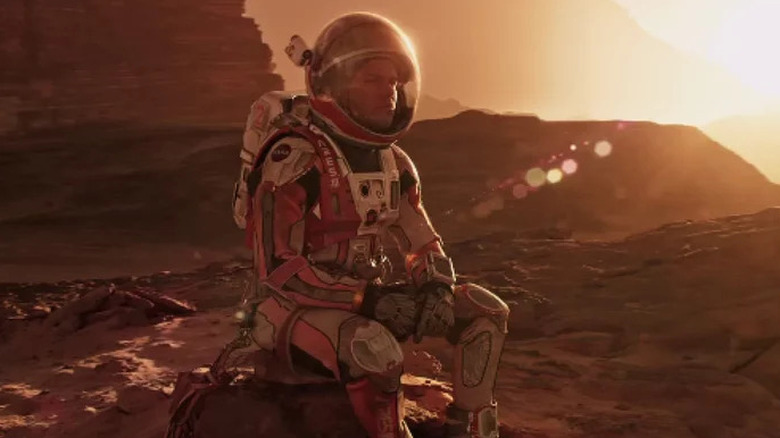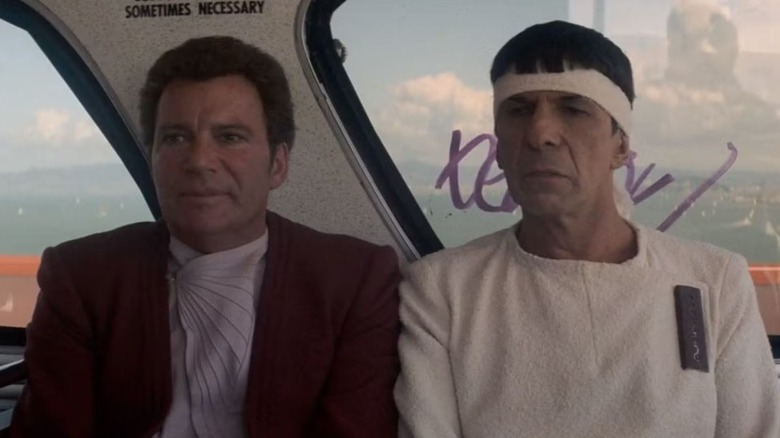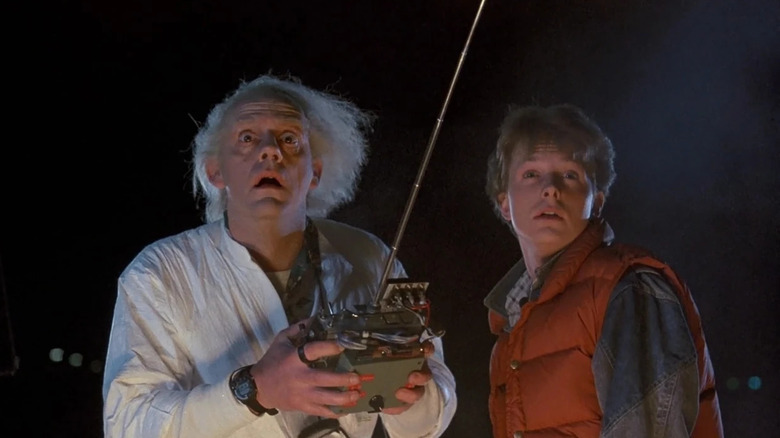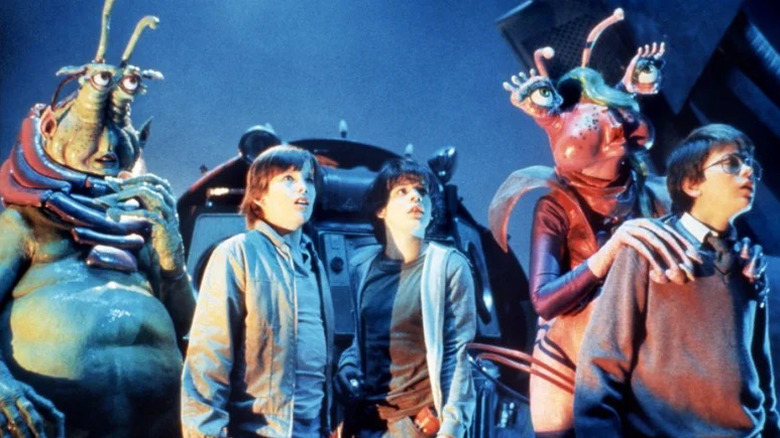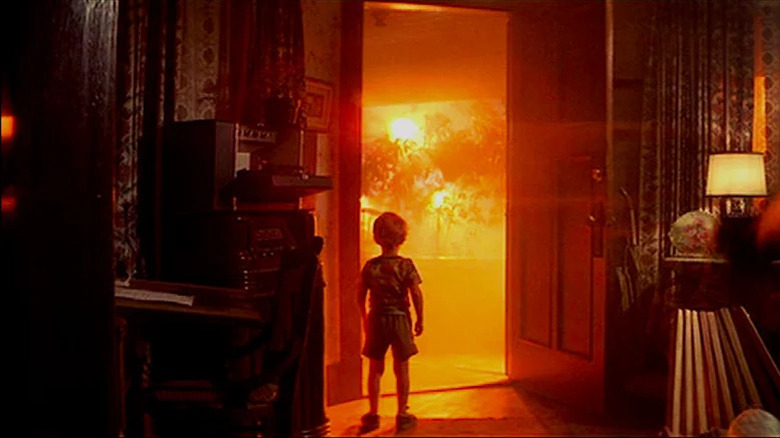Look at some of the best sci-fi movies of all time, and chances are you’ll find a whole bunch of mayhem. Destructive events and deadly encounters with the unknown often go with the territory, to the point that it can sometimes be difficult to envision a work of science fiction that doesn’t rack up a significant body count before the end credits roll.
But it doesn’t always have to be that way. While mortal danger is an easy way to create stakes and showing people die is the easiest way to establish danger, there are plenty of methods of making a sci-fi project interesting without killing off half the cast. This doesn’t mean that the space Marines have to put down their laser rifles and settle their differences with the alien invaders over a game of Canasta, either. Many sci-fi films have found ways to provide thrills without any fatalities — and without sacrificing any intrigue. Here are some of the finest examples of great sci-fi movies where nobody dies.
The Martian
“The Martian” is one of the surprisingly high number of space-themed installments in the long-running, unofficial movie series about expensive missions to save Matt Damon. Here, Damon plays Mark Watney, an astronaut on an expedition to Mars who’s left behind on the red planet during an emergency evacuation. He now has to figure out how to survive and maintain sanity while stranded on a planet that can’t support human life, with barely any hope of getting out alive.
That struggle and the climactic rescue attempt essentially constitute the entire movie. While getting Watney back home is a risky operation for everyone involved, the story really hinges on the life of a single man. The fact that “The Martian” is on this list is a pretty good indication of how things play out — and with its $108 million production budget, it’s definitely on the more expensive and epic side of sci-fi movies where absolutely nobody dies.
Star Trek IV: The Voyage Home
The “Star Trek” franchise has been known to solve problems non-violently, but this generally doesn’t apply to the films. After all, almost every “Star Trek” movie from worst to best tends to feature violent conflict and even the occasional death of a main character. But “Star Trek IV: The Voyage Home” — aka the one about time travel and whales – eschews death scenes entirely, opting instead to take the Original Series gang to contemporary San Francisco. Even without deaths, it’s one of the wildest franchise installments out there, full of amazingly surreal moments like Spock (Leonard Nimoy) casually Vulcan nerve-pinching an annoying punk rocker.
Behind the scenes, questions linger about who really wrote the “Star Trek IV” script, but the movie is certainly a Nimoy masterclass. The Spock actor not only stars in it, but also directed and was instrumental in coming up with its uniquely comedic story that the cast clearly loved filming. Nimoy’s rules for his “Star Trek IV” vision specifically forbade death, explosions, and even traditional primary antagonists, leading to a wholly different “Star Trek” experience than the previous entries in the film series.
“The Voyage Home” might not necessarily be an ideal “Star Trek” starter movie because its tone is so wildly different from most of the franchise, but it’s definitely a series standout, made all the more impressive by its complete lack of characters who die. If the movie would have pulled off its original plan to have Eddie Murphy meet Spock, “Star Trek II: The Wrath of Khan” might have a serious challenger as the most amazing “Star Trek” film.
Back to the Future
“Back to the Future” holds the strange distinction of being a science fiction movie that features both a seemingly graphic death and no body count whatsoever. This is made possible by the Robert Zemeckis classic’s time travel premise.
Marty McFly (Michael J. Fox) witnesses a pair of Libyans machine gun Doc Brown (Christopher Lloyd) to death over a wad of stolen plutonium early in the movie. He then escapes the assailants with Doc’s time-traveling DeLorean, which sends him to the year 1955 mid-chase, with the Libyans crashing comically into a parking booth. (We can safely presume their collision is non-fatal, since this is an 1980s movie and the car doesn’t explode.)
Of course, Doc’s death wasn’t what it appeared to be. Marty’s actions in the past and his decision to inform a younger Doc about his grim fate affect the events of 1985, and it turns out the older Doc was wearing a bulletproof vest all along. Technically, we could envision a case being made that the original Doc might have been murdered for real, but since Marty’s actions alter the events of his reality, let’s just say for all intents and purposes that Doc survives. Time travel, folks: It can get weird.
Explorers
In 1985, Joe Dante was fresh off directing the great holiday horror comedy “Gremlins” and joined forces with young talents River Phoenix and Ethan Hawke. The end result was “Explorers,” a fun space adventure romp where obsessive science fiction fans Wolfgang (Phoenix) and Ben (Hawke) join forces with their friend Darren (Jason Presson) to build a DIY starship. Eventually, they end up in outer space, only to meet their extraterrestrial equivalent in a pair of young aliens (Robert Picardo and Leslie Rickert), who are heavily into Earth’s culture.
“Explorers” is a fun, silly film that substitutes death and destruction with whimsy and entertaining moments. Unfortunately, it’s become a bit of a forgotten sci-fi movie that’s more notable for its stars than, say, its inventive but goofy-looking alien creatures. Still, it’s not a bad watch by any means, and enjoys a deserved cult following.
Apart from the fact that no one dies in the movie, “Explorers” even features some fun commentary about sci-fi violence with its explanation for why visitors from other planets refuse to visit Earth. They’ve simply seen our violence-filled sci-fi shows, and want nothing to do with a species that apparently loves to fight aliens.
Close Encounters of the Third Kind
Steven Spielberg’s seminal 1977 sci-fi drama “Close Encounters of the Third Kind” would be a very different film if the aliens started gunning down everything that moves when they ultimately reveal themselves, á la “Mars Attacks!” Instead, the movie is a slow burn that starts with the reappearance of a ship that was lost in the Bermuda Triangle in 1945, and moves on to a series of strange mysteries that tie into the obsessions of paranormal-sensitive people.
Richard Dreyfuss’ Roy Neary leads an ensemble of increasingly bewildered characters who ultimately have their titular close encounter with extraterrestrials. Despite the heavy presence of both aliens and the military, “Close Encounters of the Third Kind” steers away from death and draws its thrills from sheer awe and mystery instead. As always, it’s up to the viewer whether they prefer this sci-fi approach to more visceral threats, but there’s always room for this sort of dramatic science fiction filmmaking.
This post was originally published on here


